Last summer (these first two photos were taken July 22, 2012) I photographed this mated pair of Red-tailed Hawks in western Montana. On most mornings and some evenings I could almost count on finding them perched in the same old snag and even on the same branch of the dead tree.
The male is on the left and the somewhat larger (sexual dimorphism) female on the right. This pair seemed inseparable. When I saw one I nearly always saw them both, perched very close to each other.
At times they couldn’t seem to get close enough to each other.
Earlier this month on my first Montana camping trip I found the same mated pair on the same perch (male at bottom, female up top). Sometime in the interim part of the branch that the female is perched on broke off (compare photo #1 to photo #3) so there’s no longer enough room there for both birds to perch comfortably.
When the female gave me a long and lazy wing stretch I figured she was about ready to take off…
which she did.
Seconds later the male followed her.
I was able to stay locked on to the male…
as he left the tree behind and descended slightly so that some of the trees in the background became part of the frame.
After this shot I began to lose focus.
I’m intrigued by the mating patterns, pair behaviors and roosting habits of these hawks. The species is known for using the “same roost site, and even roost tree, for several nights to several weeks” (BNA) but this pair seems almost addicted to this particular tree over the long haul. The land owner told me that this pair has used that roost tree “for years”.
Non-migratory Red-tailed Hawks are usually monogamous and maintain pair bonds until the death of a partner but there is “no information” on maintenance of pair bonds in migrants. In much of North America this species tends to be year-round residents (sedentary) but in the higher elevations of Montana they’re mostly migratory. In non-migratory (sedentary) birds, mates remain together throughout the year but it is “unknown” if this is the case in migratory birds. Range maps show that this pair is right on the border between migratory and sedentary but since this pair seems so loyal to each other over time I suspect that they may be non-migratory.
I’m wondering if I’ll find this pair, perhaps in the same roost tree, once again next summer.
Ron
Note: I’ve used Birds of North America Online as a reference for this post.


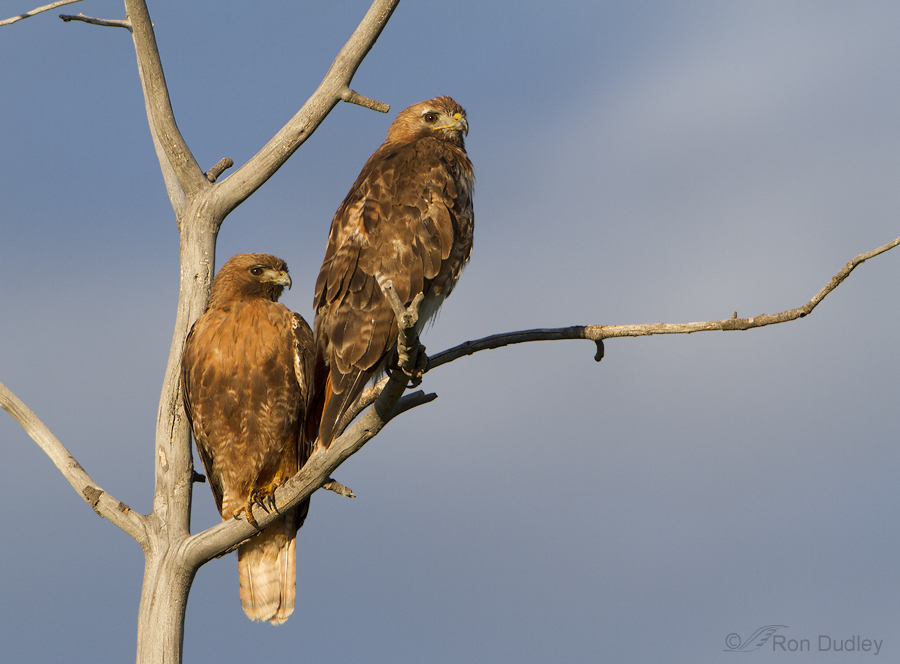

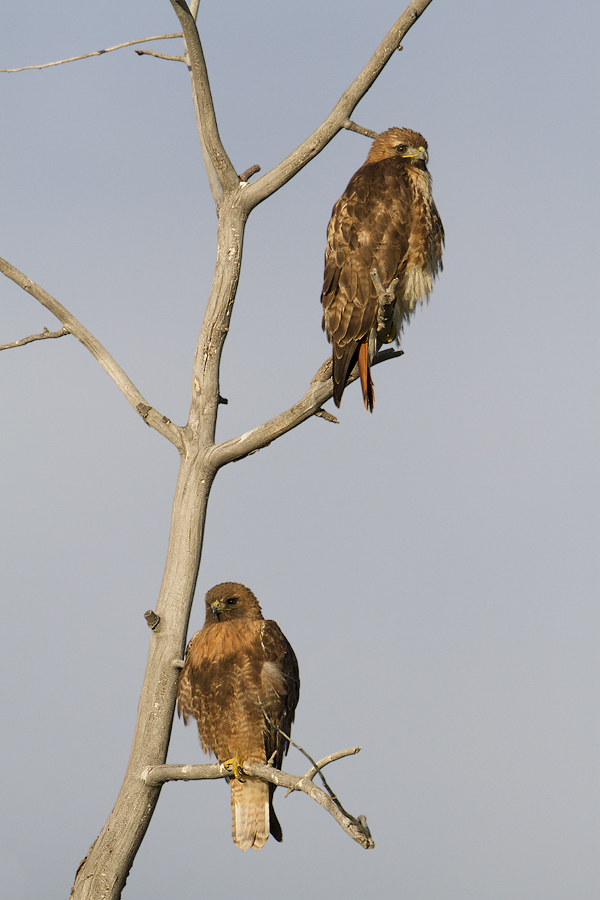
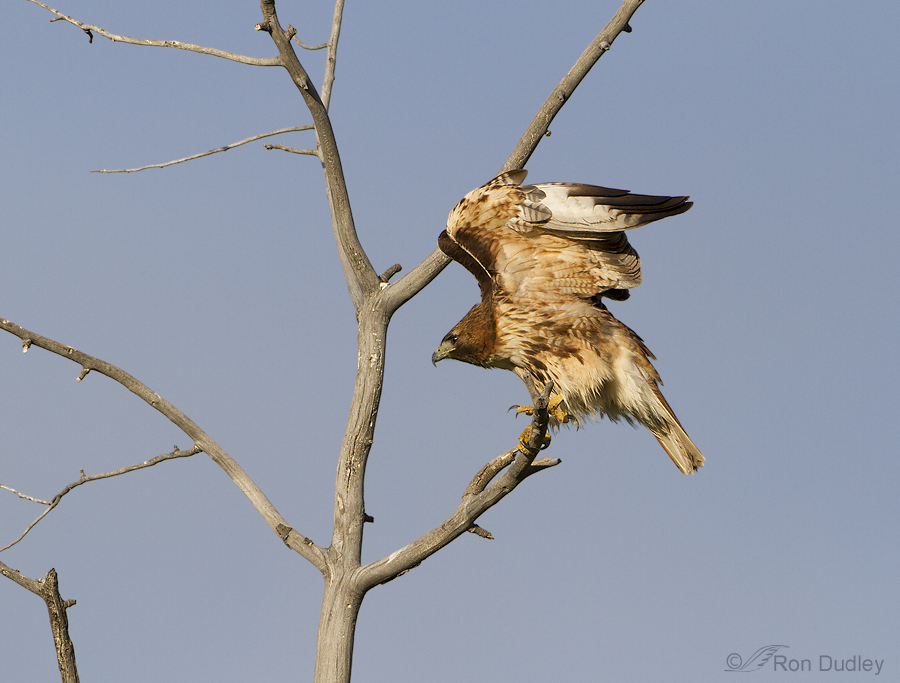
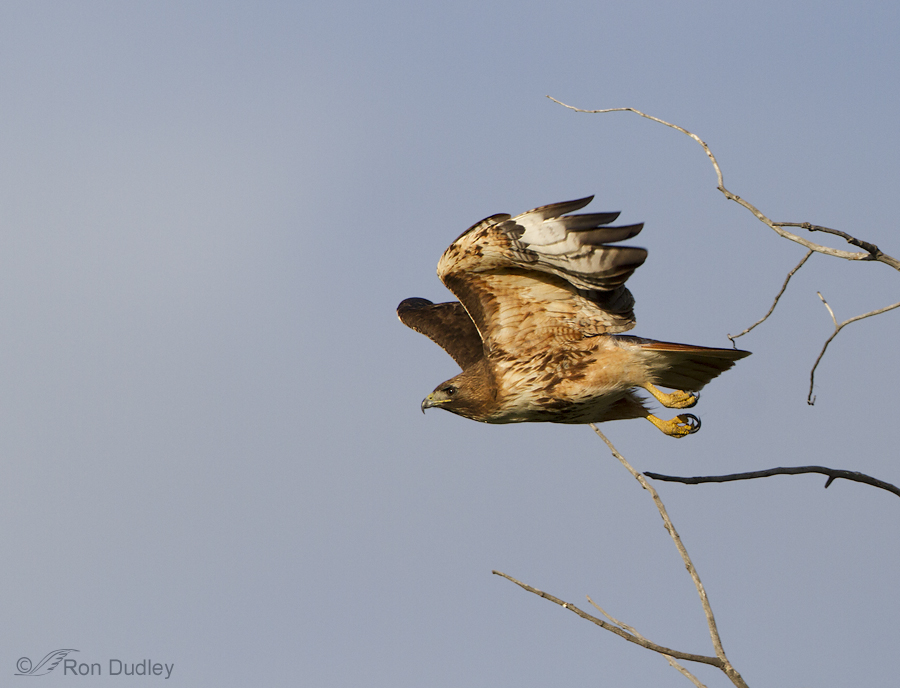
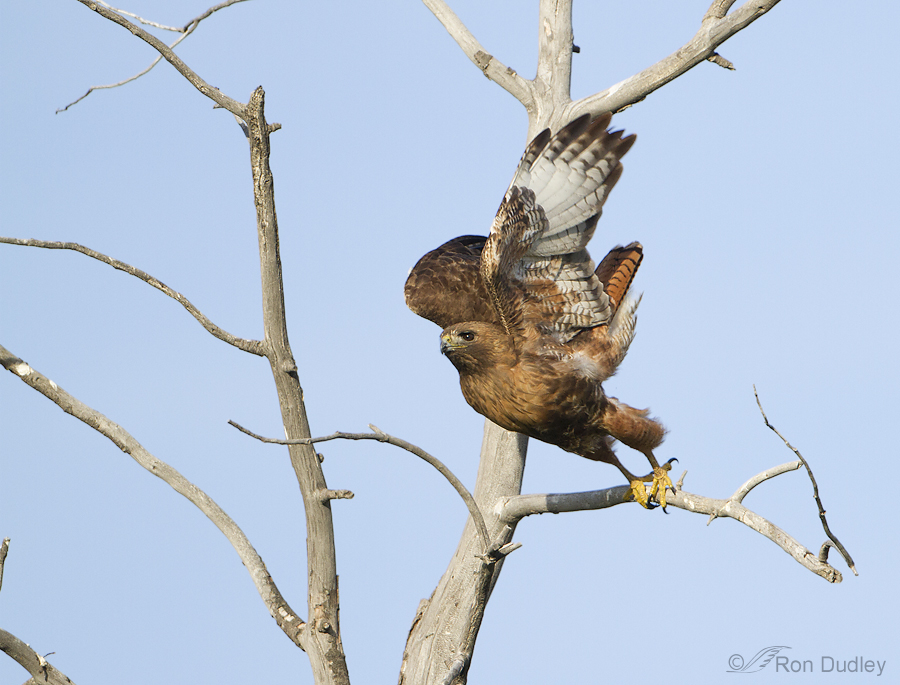
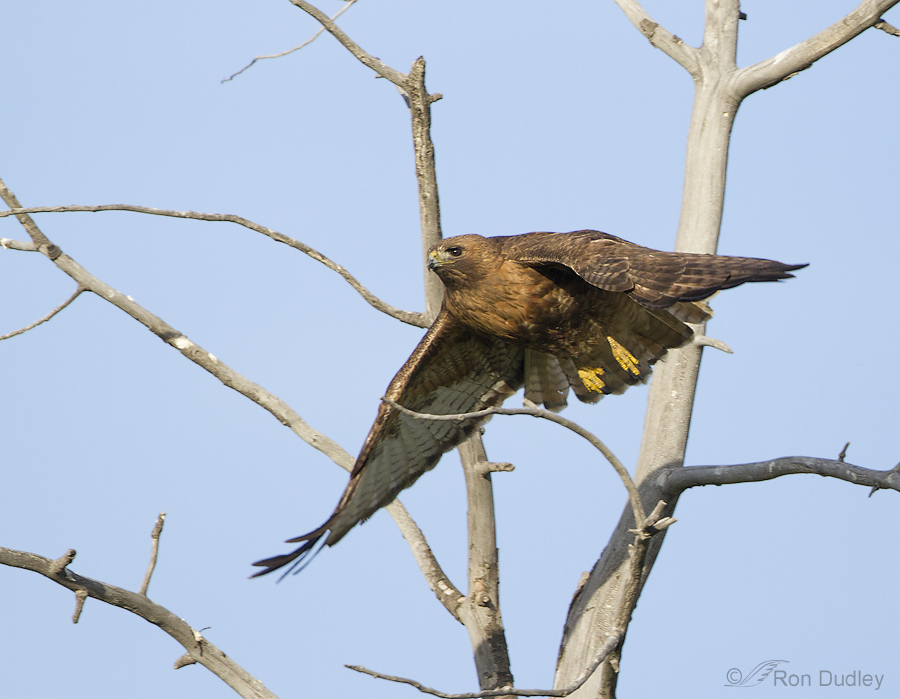
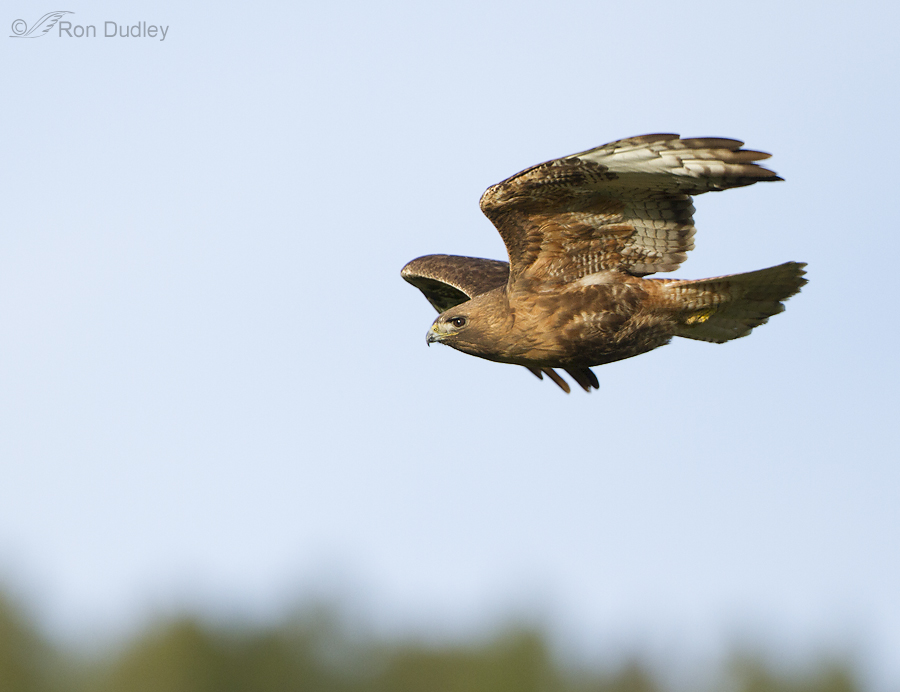

Wonderful shots Ron. There is just something about RT’s that gets me.
As usual, a beautiful series of photos. My favorite is the one of the male as he is starting to take off. Catching him at that exact moment is amazing.
How I envy you that you have found this! Your shots are, as usual just phenomenal! Oh how you brighten my day!
Charlotte NOrton
Wow. Wonderful shots of a stunning pair. If the land-owner has seen them use the roost tree for years you (and we) could be lucky. I hope so.
Do they repartner after the death of one of the couple? I believe in albatrosses the females might repartner but the male usually also dies if they lose their partner.
Wonderful series of photos and such a nice subject to look forward to every year. As to the varieties , I do not know but did see a book about red tails and was amazed at the number of varieties in that book.Thank goodness for their distinctive call and the usual red tail for id purposes.
Hi Ron,
Beautiful photos as always! As you note, there is wide variation among Red-tailed Hawks. Both of these birds appear to be the western (calurus) race of Red-tailed Hawk. The male is a rufous (intermediate) morph, which is found only in the calurus subspecies.. BTW, even the rufous morph has clinal color variation! Krider’s, on the other hand, is a color morph of the eastern subspecies. Speaking of site fidelity, I guess these birds could be posting the same thing about you! Thanks, Dick
Wonderful, touching photos. Our red-tailed hawks have lighter, spotted breasts…look quite white from below. Composition in first two photos are similar to one of Katie Lee’s paintings. She’s one of the top wildlife painters, teaches world-wide, including the New York Botanical Gardens and one of the nicest people on Earth I told her about your blog and she loves it.
Patty, Red-tails have tremendous variety in their plumage – we see quite a few variations around here. I’m glad your friend is enjoying the blog. Thank you.
Great shots Ron!!
These Red-tails look like the Dark phase Krider’s Hawk.
That would be a life sighting for me.
Just beautiful images.
Thank you, Dick. I guess I don’t know enough about dark phase Krider’s to recognize them if that’s what they are.
Ron, The Great Plains Red-tails are called Krider’s Hawk has paler upperparts, whitish tail with pale reddish wash and in flight, pale rectangular patches at base of primaries on upperwing. Many southwestern Redtails lack belly band and have uniformly light underparts.
Dark phase of western form has dark wing linings and underparts, obscuring the bar on leading edge and belly band, tail is dark reddish above.
In Harlan’s Hawk, formerly considered a separate species the dark phase has dusky-white tail, diffuse blackish terminal band; shows some white streaking on its dark breast; may lack scapular mottling. Harlan’s Hawk breeds in Alaska and Canada, winters primarily in central U.S.
This information taken from: Field Guide the Birds of North America, National Geographic Society.